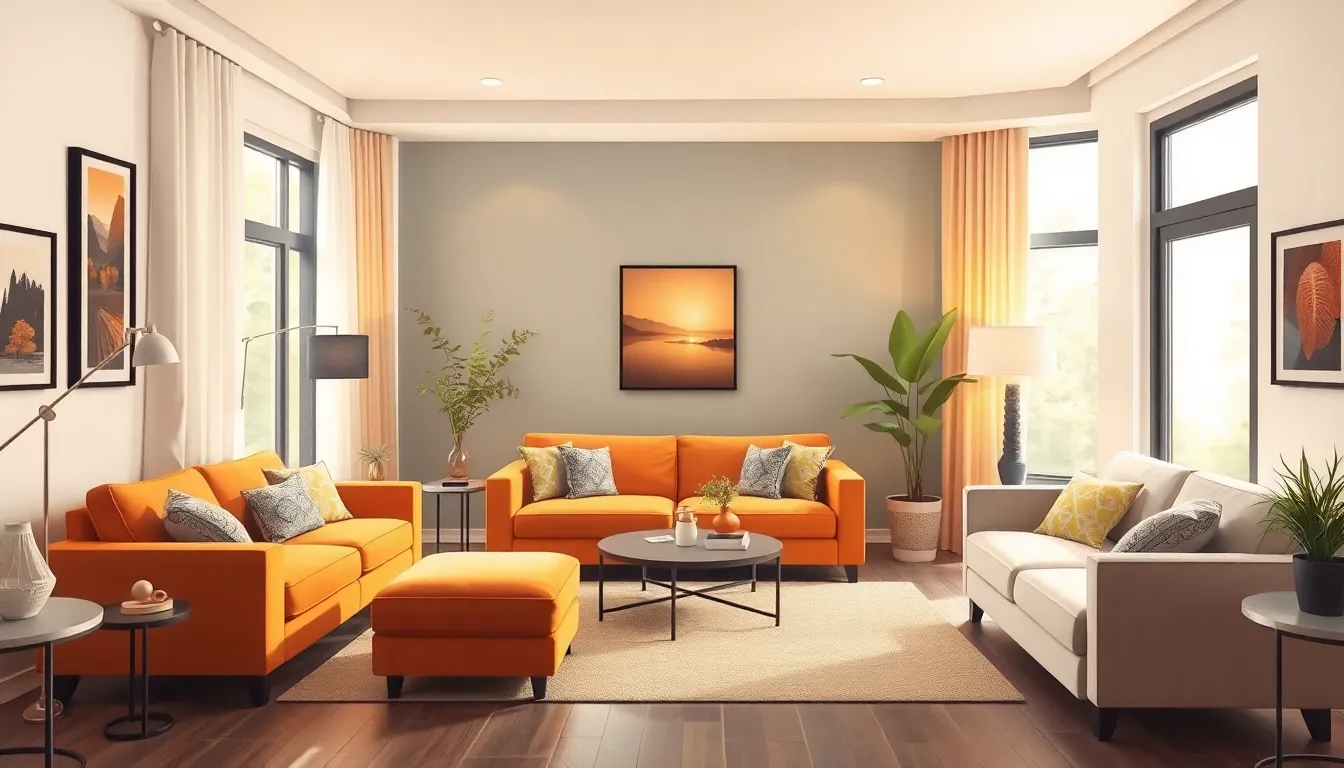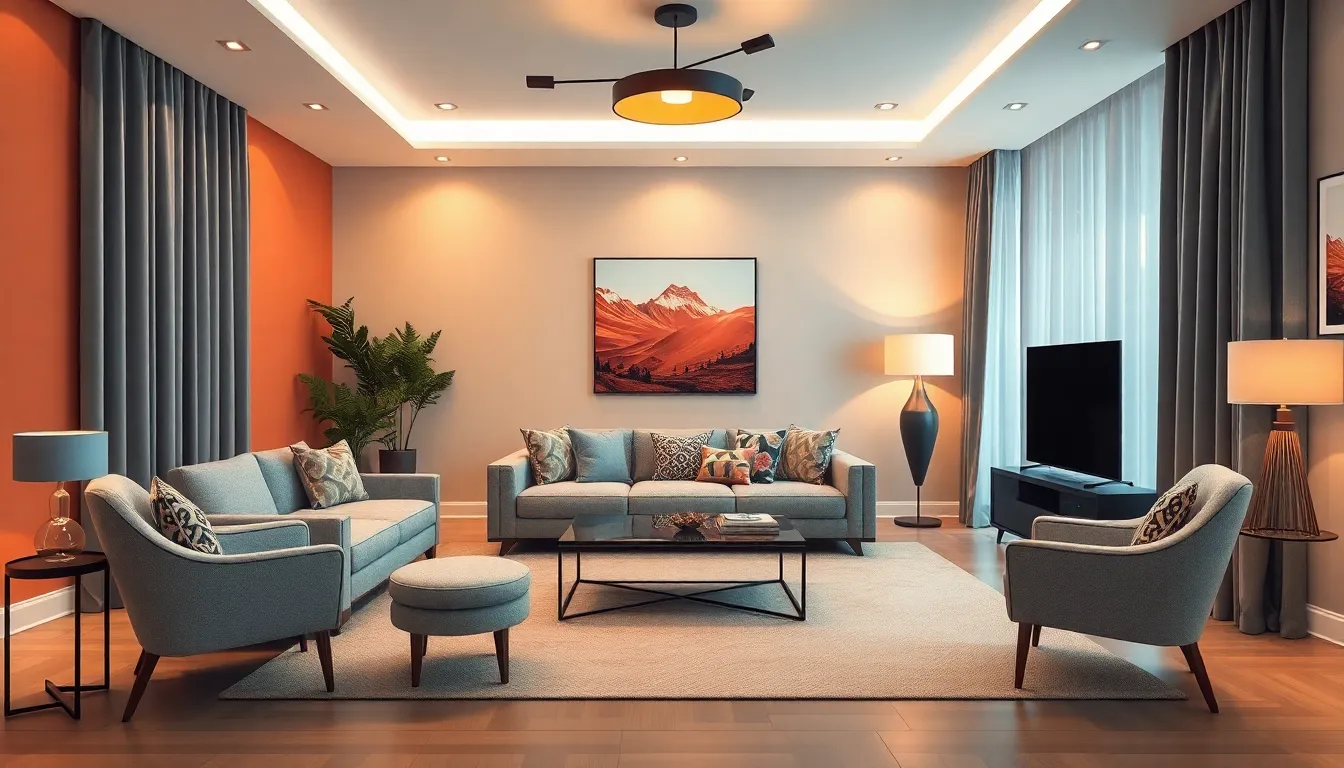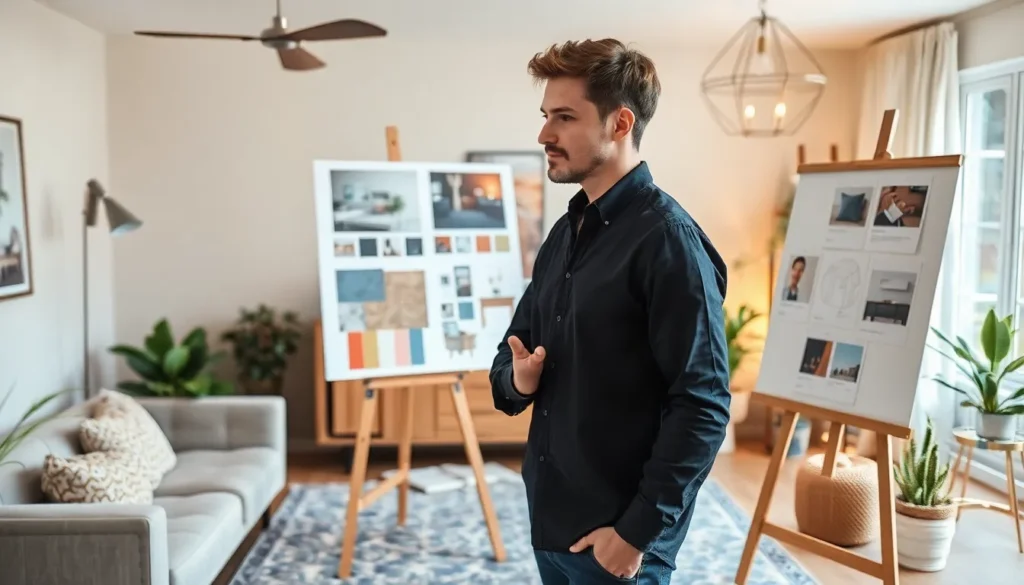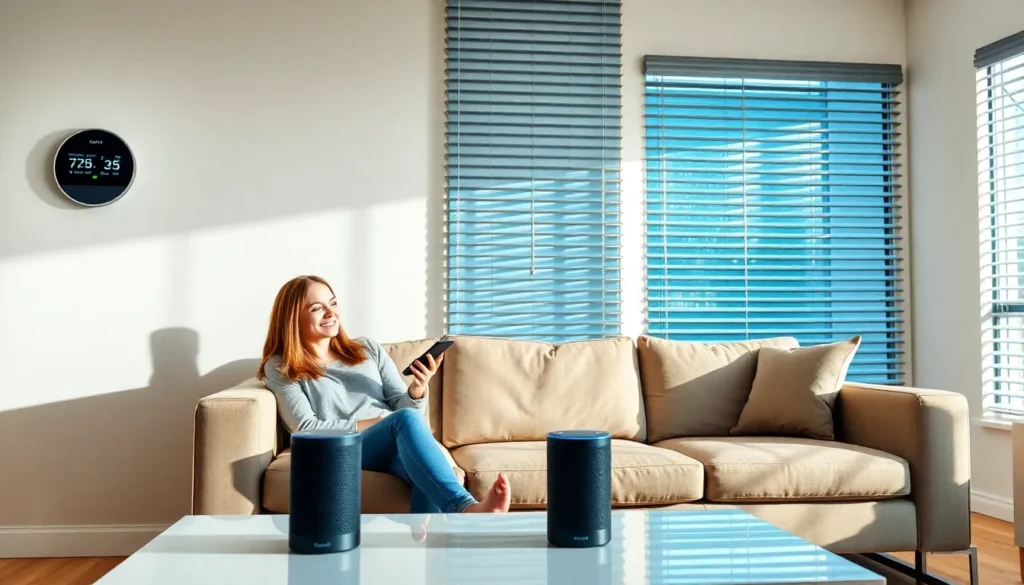Table of Contents
ToggleIn a world where bland walls and uninspired spaces reign supreme, decor design construction swoops in like a superhero armed with color swatches and a flair for the fabulous. It’s not just about hammering nails and slapping on paint; it’s about transforming ordinary spaces into extraordinary experiences. Whether it’s a cozy nook that whispers relaxation or a vibrant living room that screams personality, the right design can make all the difference.
Overview of Decor Design Construction
Decor design construction involves integrating aesthetic elements with structural components to create unique environments. Spaces reflect personal styles and preferences through careful consideration of layout, materials, and color schemes. A cohesive design emphasizes functionality while enhancing visual appeal.
Key aspects include color theory, which influences mood and perception. Effective color combinations can energize a room or create a serene atmosphere. For instance, soft blues and greens promote tranquility, while bold reds and yellows inspire vibrancy.
Materials play a significant role in decor design construction. Wood, metal, glass, and textiles contribute diverse textures and finishes. Each material offers distinctive properties, enabling designers to craft personalized experiences in various settings. Combining these elements enhances depth and visual interest.
Lighting design mustn’t be overlooked. Strategic placement of natural and artificial light sources elevates decor aesthetics. Ambient, task, and accent lighting each serve specific purposes, creating layered illumination that transforms spaces.
Incorporating furniture also impacts the overall design. Choosing pieces that align with the intended atmosphere ensures harmony in the environment. Examples include minimalist furniture for a modern look or antique pieces for a vintage vibe.
Finally, personal touches like artwork and accessories add character. Unique decor items reflect individual tastes, contributing to the ambiance and making spaces feel inviting. Thoughtful selection, therefore, is crucial for achieving a personalized and cohesive design.
Overall, decor design construction blends art and practicality, resulting in harmonious spaces that enrich daily experiences.
Key Elements of Decor Design


Decor design construction incorporates essential elements that enhance the overall atmosphere of a space. A well-executed design effectively combines aesthetics and functionality.
Color Schemes
Color schemes impact the mood and ambiance of any environment. Warm shades like reds and yellows create a cozy setting, while cool hues such as blues and greens induce calmness. Choosing complementary colors fosters visual harmony, making spaces feel cohesive. Accent colors provide splashes of interest and can draw attention to specific areas. Neutral palettes offer versatility and serve as a backdrop for vibrant decor pieces. The right color scheme transforms a room, evoking desired emotions and improving the overall aesthetic appeal.
Furniture Selection
Furniture selection plays a crucial role in decor design. Selecting pieces that align with the style and functionality of the space enhances both comfort and visual appeal. Prioritizing scale and proportion ensures furniture fits well within the room without overwhelming it. Multi-functional options maximize space efficiency, catering to varying needs. Quality materials contribute to durability and aesthetics, while unique shapes add character. Thoughtfully chosen furniture creates a balanced and inviting atmosphere, effectively reflecting personal taste.
Lighting Choices
Lighting choices significantly influence the mood and functionality of a space. Natural light sources brighten rooms, making them feel more open and inviting. Strategically placed artificial lights serve functional and decorative purposes, enhancing specific design elements. Layering different types of lighting, including ambient, task, and accent, creates depth and interest. Dimmers allow for flexibility in atmosphere, adapting to various activities. Selecting fixtures that align with the overall design adds cohesiveness and elevates the decor’s sophistication.
The Construction Process
The construction process consists of several critical stages that contribute to effective decor design. Each step emphasizes collaboration between design and practical execution.
Planning and Design
Planning begins with defining the project’s goals and establishing a clear vision. Designers assess the space to identify unique opportunities. They create sketches that include floor plans and color schemes. Collaboration with clients ensures their preferences drive the design. Feedback from stakeholders refines concepts further, ensuring alignment with expectations.
Material Selection
Selecting materials plays a significant role in achieving the desired atmosphere. Various options, such as wood, metal, and glass, contribute to the aesthetic appeal. Choosing high-quality materials enhances durability and visual interest. Textiles provide comfort and warmth in living areas. Sustainable options resonate with environmentally conscious clients, adding another layer of value to the selection process.
Implementation Phase
The implementation phase actualizes the design vision through careful execution. Contractors and craftsmen work together to ensure precision in every detail. Coordinating timelines and tasks minimizes disruptions during work. Supervision ensures quality control, leading to a polished finish. Regular check-ins with clients maintain open communication and address any concerns as they arise.
Tips for Successful Decor Design Construction
Planning plays a pivotal role in successful decor design construction. Start by defining project objectives clearly. Identify the aesthetic goals and functionality requirements to ensure all stakeholders are on the same page.
Prioritizing high-quality materials enhances the overall look and feel of a space. Choose sustainable options whenever possible, as they contribute to both aesthetics and environmental responsibility.
Focusing on lighting significantly transforms any environment. Incorporate a mix of natural and artificial light sources to create depth. Strategically position light fixtures to highlight key areas of interest.
Furniture selection greatly influences the functionality and appearance of a space. Select pieces that align with the intended style and purpose, considering scale and proportion for a balanced look. Multi-functional furniture options can maximize space efficiency and comfort.
Color schemes set the mood and ambiance significantly. Use warm tones to foster coziness, while cooler shades promote relaxation. Complementary colors enhance visual harmony and can create focal points within the design.
Integrating personal touches, such as artwork and unique accessories, adds character and individuality to the space. These elements reflect personal style and create an inviting atmosphere.
Feedback during the process is essential. Encourage open communication among clients, designers, and contractors to address any concerns promptly. A collaborative approach leads to successful outcomes.
Following these tips ensures that decor design construction not only meets aesthetic expectations but also enhances the overall functionality of a space.






